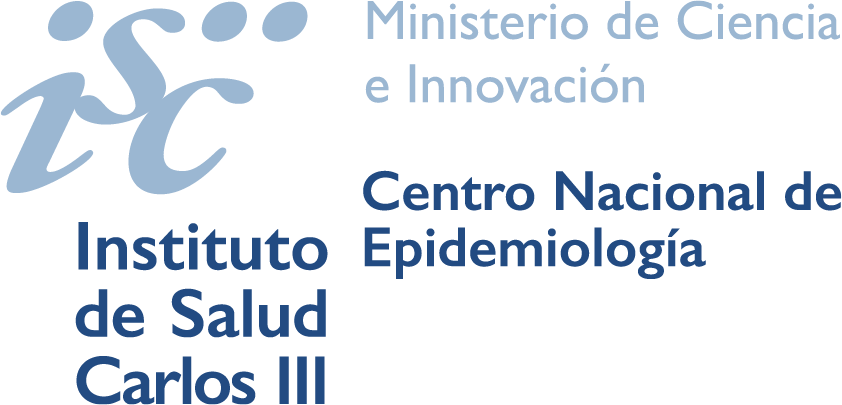Evolution of hydatidosis in Spain since 2015 to 2023
DOI:
https://doi.org/10.4321/s2173-92772024000300003Keywords:
Hydatidosis; Zoonosis; Epidemiological surveillanceAbstract
Introduction: hydatidosis is a zoonosis typically diagnosed late and/or incidentally, caused by the parasite Echinococcus. The notification rate in Spain has been decreasing since it was included as a notifiable disease. The aim of this work is to describe the situation and evolution of human hydatidosis in Spain since 2015, with special emphasis in the last year 2023.
Method: a descriptive analysis was conducted of the cases of hydatidosis reported to the National Epidemiological Surveillance Network (RENAVE) since 2015, with a special emphasis on the year 2023. Variables such as age, sex, autonomous community of residence, and exposure were analyzed. Frequencies, percentages, notification rates were calculated, and maps were created.
Results: Between 2015 and 2023, 710 indigenous cases of hydatidosis were reported, with a peak in 2015 (154 cases) and decline until 2019, followed by a slight increase in 2021. In 2023, 71 indigenous cases were reported, of which 39.4% were hospitalizated, although no deaths were recorded. In 2023, the highest notification rates were observed in Extremadura, La Rioja, and C.F. Navarra, while the lowest rates were in the Comunitat Valenciana, País Vasco, and Cataluña.
Discussion: a decrese in notification followed by an uptick suggests the effectiveness of control measures but also indicates persistent challenges. The presence of imported cases and regional variability reflects socioeconomic, cultural or environmental factors that must be considered in control and prevention strategies.
Downloads
References
Eckert J, Conraths FJ, Tackmann K. Echinococcosis: an emerging or re-emerging zoonosis? Int J Parasitol. 2000;30(12-13):1283-94.https://doi.org/10.1016/s0020-7519(00)00130-2.
Marie C, Petri AW. Hidatidosis. Manual MSD Versón para profesionales [Internet] [citado 6 de agosto de 2024 Aug 6] Disponible en: https://wwwmsdmanualscom/es-es/professional/enfermedades-infecciosas/cestodos-tenias/hidatidosis.
World Health Organization. Neglected tropical diseases [Internet]. [Citado 31 de julio de 2024]. Disponible en: https://www.who.int/news-room/questions-and-answers/item/neglected-tropical-diseases.
Carmena D, Sanchez-Serrano LP, Barbero-Martinez I. Echinococcus granulosus infection in Spain. Zoonoses Public Health. 2008;55(3):156-65.https://doi.org/10.1111/j.1863-2378.2007.01100.x.
Heymann DL. Control of Communicable Diseases Manual. 2015. American Public Health Association. 20th Edition.
Bowles J, Blair D, McManus DP. Genetic variants within the genus Echinococcus identified by mitochondrial DNA sequencing. Mol Biochem Parasitol. 1992;54(2):165-73.https://doi.org/10.1016/0166-6851(92)90109-w.
Thompson RCA. The taxonomy, phylogeny and transmission of Echinococcus. Exp Parasitol. 2008;119(4):439-46.https://doi.org/10.1016/j.exppara.2008.04.016.
Bortoletti G, Gabriele F, Conchedda M. Natural history of cystic echinococcosis in humans. Parassitologia. 2004;46(4):363-6. PMID: 1604469.
CDC - Echinococcosis [Internet]. [Citado 31 de julio de 2024]. Disponible en: https://www.cdc.gov/dpdx/echinococcosis/index.html.
Moro P, Schantz PM. Echinococcosis: a review. Int J Infect Dis. 2009;13(2):125-33.https://doi.org/10.1016/j.ijid.2008.03.037.
Eckert J, Deplazes P. Biological, epidemiological, and clinical aspects of echinococcosis, a zoonosis of increasing concern. Clin Microbiol Rev. 2004;17(1):107-35.https://doi.org/10.1128/CMR.17.1.107-135.2004.
Decisión de la Comisión (UE) 2018/945 de 22 de junio de 2018, on the communicable diseases and related special health issues to be covered by epidemiological surveillance as well as relevant case definitions. Vol 61. 6 July 2018. [Internet]. Disponible en: https://www.boe.es/doue/2018/170/L00001-00074.pdf.
Gessese AT. Review on Epidemiology and Public Health Significance of Hydatidosis. Vet Med Int. 2020;2020:8859116.https://doi.org/10.1155/2020/8859116.
Casulli A, Abela-Ridder B, Petrone D, Fabiani M, Bobic B, Carmena D, et al. Unveiling the incidences and trends of the neglected zoonosis cystic echinococcosis in Europe: a systematic review from the MEmE project. Lancet Infect Dis. 2023;23(3):e95-e107.https://doi.org/10.1016/S1473-3099(22)00638-7.
Nocerino M, Pepe P, Ciccone E, Maurelli MP, Bosco A, Boue F, et al. Epidemiological update of cystic echinococcosis in livestock and assessment of practices related to its control in the Mediterranean area. Acta Trop. 2024;255:107240.https://doi.org/10.1016/j.actatropica.2024.107240.
Rojo-Vazquez FA, Pardo-Lledias J, Francos-Von Hunefeld M, Cordero-Sanchez M, Alamo-Sanz R, Hernandez-Gonzalez A, et al. Cystic echinococcosis in Spain: current situation and relevance for other endemic areas in Europe. PLoS Negl Trop Dis. 2011;5(1):e893.https://doi.org/10.1371/journal.pntd.0000893.
Informe Epidemiológico sobre la situación de la hidatidosis en España. Centro Nacional de Epidemiología. Instituto de Salud Carlos III. Año 2023. Madrid, 17 de abril de 2024. [Internet]. Disponible en: https://www.isciii.es/QueHacemos/Servicios/VigilanciaSaludPublicaRENAVE/EnfermedadesTransmisibles/Documents/archivos%20A-Z/Hidatidosis/Hidatidosis%20INFORME%2019-21-final.pdf
Centro Nacional de Epidemiología. Protocolos de la Red Nacional de Vigilancia Epidemiológica. Protocolo de Vigilancia de Hidatidosis. Versión 1 de junio de 2013. Revisado el de 3 de septiembre de 2016. [Internet]. Disponible en: https://www.isciii.es/QueHacemos/Servicios/VigilanciaSaludPublicaRENAVE/EnfermedadesTransmisibles/Documents/PROTOCOLOS/Protocolo%20de%20Vigilancia%20de%20Hidatidosis.pdf
Instituto Nacional de Estadística (INE). INEbase. [Internet]. Disponible en: https://www.ine.es/dyngs/INEbase/es/categoria.htm?c=Estadistica_P&cid=1254734710984.
National Cancer Institute. Joinpoint Trend Analysis Software. [Internet]. Disponible en: https://surveillance.cancer.gov/joinpoint/.
Vuitton DA, Economides P, the WHO-IWGE EurEchinoReg Network. Echinococcosis in Western Europe, a risk assessment/risk management approach. Food and Agriculture Organization of the United Nations (FAO). [Internet]. Disponible en: ftp://ftp.fao.org/upload/Agrippa/666_en.doc.
Gushulak BD, MacPherson DW. Population mobility and infectious diseases: the diminishing impact of classical infectious diseases and new approaches for the 21st century. Clin Infect Dis. 2000;31(3):776-80.https://doi.org/10.1086/313998.
World Health Organization. Echinococcosis. 2021. [Internet]. [cited 2024 Jul 31]. Disponible en: https://www.who.int/news-room/fact-sheets/detail/echinococcosis.
Oksanen A, Siles-Lucas M, Karamon J, Possenti A, Conraths FJ, Romig T, et al. The geographical distribution and prevalence of Echinococcus multilocularis in animals in the European Union and adjacent countries: a systematic review and meta-analysis. Parasit Vectors. 2016;9(1):519.https://doi.org/10.1186/s13071-016-1746-4.
Carmena D, Cardona GA. Echinococcosis in wild carnivorous species: epidemiology, genotypic diversity, and implications for veterinary public health. Vet Parasitol. 2014;202(3-4):69-94.https://doi.org/10.1016/j.vetpar.2014.03.009.
Pardo J, Muro A, Galindo I, Cordero M, Carpio A, Siles-Lucas M. [Hydatidosis in the province of Salamanca (Spain): should we let down our guard?]. Enferm Infecc Microbiol Clin. 2005;23(5):266-9.https://doi.org/10.1157/13074966.
World Health Organization. One Health. 2023. [Internet]. [Citado 31 de julio de 2024]. Disponible en: https://www.who.int/news-room/fact-sheets/detail/one-health.
Herrador Z, Siles-Lucas M, Aparicio P, Lopez-Velez R, Gherasim A, Garate T, et al. Cystic Echinococcosis Epidemiology in Spain Based on Hospitalization Records, 1997-2012. PLoS Negl Trop Dis. 2016;10(8):e0004942.https://doi.org/10.1371/journal.pntd.0004942.
Torgerson PR, Budke CM. Echinococcosis--an international public health challenge. Res Vet Sci. 2003;74(3):191-202.https://doi.org/10.1016/s0034-5288(03)00006-7.
Zabala A, Salvador F, Sanchez-Montalva A, Bosch-Nicolau P, Escola-Verge L, Espinosa-Pereiro J, et al. Imported cystic echinococcosis in Spain: a systematic review. Trans R Soc Trop Med Hyg. 2021;115(10):1184-9.https://doi.org/10.1093/trstmh/trab022.
European Centre for Disease Prevention and Control. Echinococcosis. 2024. Annual Epidemiological Report for 2022. Stockholm: ECDC. [Internet]. Disponible en: https://www.ecdc.europa.eu/sites/default/files/documents/ECHI_AER_2022_Report.pdf.
Downloads
Published
How to Cite
Issue
Section
License
Copyright (c) 2024 Dan Rodríguez-Campelo, Juan Miguel Guerras, Beatriz Fernández-Martínez, Zaida Herrador-Ortiz, Rosa Mª Estévez-Reboredo

This work is licensed under a Creative Commons Attribution-NonCommercial-ShareAlike 4.0 International License.
El material creado por un autor puede ser distribuido, copiado y exhibido por terceros si se hace referencia a la autoría. No se puede obtener ningún beneficio comercial y las obras derivadas tienen que estar bajo los mismos términos de licencia que el trabajo original


